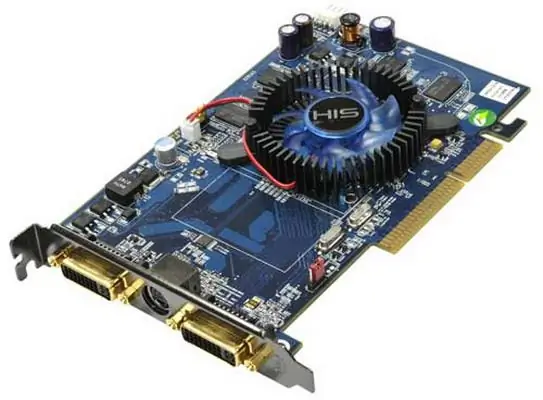For owners of video cards and integrated solutions, the amount of available video memory is quite important. The maximum possible resolution depends on it, and in games also - the quality of textures and images in general. Therefore, it is not surprising that many users are wondering - how to increase the amount of video memory? Unfortunately, this is not always possible without replacing the video card or motherboard (in the case of an integrated solution).

It is necessary
Computer, integrated or discrete graphics card, ATITool software
Instructions
Step 1
There may be several situations when there may be a lack of video memory. If you have a video card built into the motherboard, the amount of memory allocated for it can be changed in the BIOS. As a rule, integrated video cards do not have their own memory, using the computer's RAM as it. The BIOS sets how much memory the video card will use. Therefore, if you have a small amount of RAM on your PC, do not increase the amount of video memory in this way. This can result in slow computer performance.
Step 2
To change the amount of video memory after turning on the computer, enter the BIOS. To do this, press the Del button continuously. In the BIOS, find the VRAM, VIDEO RAM or similar section. Go into it by pressing Enter. Next, in the appropriate line, enter or select the amount of video memory you need. Exit BIOS by saving settings, then restart your PC. After that, the memory capacity will be increased.
Step 3
For a discrete video card, if you do not take into account outdated models like 3Dfx Voodoo and S3 Trio, unfortunately, it will not be possible to increase the amount of video memory. But you can increase the speed of the memory chips by improving the card's performance in games. There is a universal utility for overclocking video cards - ATITool. It is simple and convenient for novice users, supports Russian.
Step 4
With ATITool running, find the Overclocking tab, then Memory Speed. Increase the memory speed by moving the slider to the right. Click OK to save the settings.
Step 5
To test the functionality of the new parameters, in the ATITool menu, click "Open 3D Window". Testing of the stability of the video card will begin, taking into account the new settings. Wait for the process to finish, which can take up to twenty minutes. When checking, see how the image looks on the screen. If extraneous dots and distortions appear on it, then you have exceeded the permissible memory speed of the video card. Try to decrease the selected value. If the test is successful, it means that such settings are working, and you can try to overclock the memory even more. After determining the limit of the video memory frequency at which the operation of the video card is stable, save the changes.






